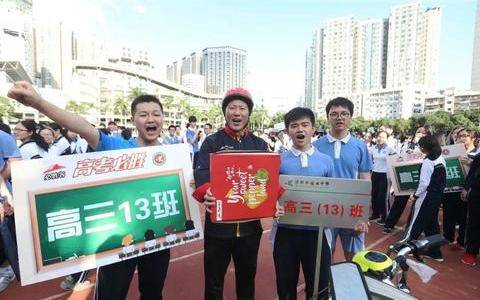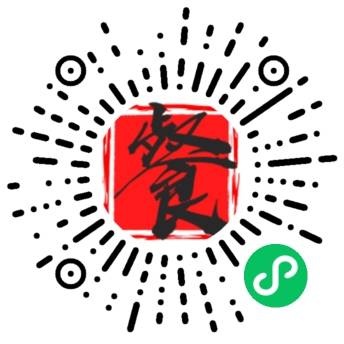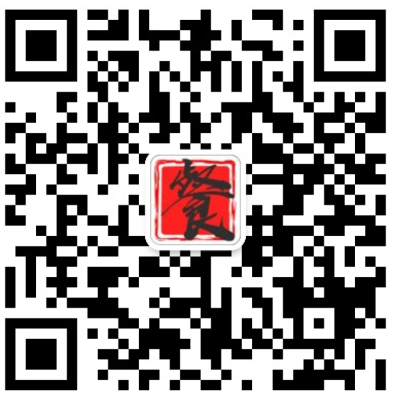▲Click “FBIF食品饮料创新” inblueto follow
Reply number “3″to join in F&B WeChat Group
Written by:Laurel Guo, Highly Wang, Joseph Zhao
Edited by: Wilbur Zhu (WeChat ID: aotokuer), Anna HU
He used to be the Brand Manager of Kodak Greater China. He used to be the Chief Marketing Officer of Mengniu Dairy. But now, he is the Co-Founder and Chairman ofShanghai JIAJUN Beverage Co., Ltd. He is Michael Sun, who shared his opinions and anticipation about the NFC juice industry on FBIF 2017.
The History ofLingdu Guofang
It has been 6 years sinceLingdu Guofangoriginally cameinto the market in 2011 with its first juice beverage packed in cans.
In the June of 2012,Lingdu Guofanglaunched its earliest plastic-bottled juice with a volume of 300ml at a price of 16.8 RMB. Chengdu, Chongqing and Zhengzhou are the three markets that it initially got into, but they only resulted in 2256 bottles as the sales number for the first month.
In 2013, it developed family-size pack. It also put forward mini pack targeted at children in 2014, but it soon faded out in the market due to a low price-performance ratio.
In the August of 2014, the sales had reached 1 million and 26 months later, 1 million has become a monthly average sales figure. The rapid growth had brought more attention to this industry, drawing more and more companies to NFC juice.
In 2016,Lingdu Guofanginvested in its own factory so that it could do the beverage filling by itself. It also presented a new brand called Choice Fresh mainly for exclusive channel purchases.Great juice comes from great fruits and great fruits come from all over the world.
Lingdu Guofanghas begun to import high quality ingredients from different places across the globe since 2016. For example, it brought in various berries like black berries and cherries from Spain in the November of 2016 and it will introduce juice from Florida this year. The ingredients ofLingdu Guofangwill continue to be globalized.
The Future of Juice
The demand for fruit, especially fresh fruit and pure fruit juice, has been on the rise in China. Customers are also more willing to accept fruit with a higher price. A 10-yuan little kiwi from New Zealand, for example, also sells well. In recent years, companies producing juice beverage with 10% of pure juice are having a hard time because customers are demanding purer juice with 30% or even 50% of pure juice content, which indicates that customers’awareness of high quality juice is increasing. Milk demand per capita in China used to be 8 kg and now it has grown to 30 kg. This is a very high level considering that Chinese people are prone to lactose intolerance. In the western world, milk demand per capita milk used to be 200 kg, but now it has come back to normal at 50-60 kg. The competition of the milk industry is with the yogurt industry, both of which has come nearly to a saturated market. In terms of juice, however, individual consumption of juice in China is less than 1 kg a year and in the US, it is 30-80 kg. Americans drink twice as much milk as Chinese but 30 times as much juice. In the light of this,there is a bright future for the development of the pure juice industry as well as the fruit and vegetable industry in the next decade in China with a growing pace faster than milk.
The current slow progress can be attributed to China’s status quo in agriculture, logistics and retail. Firstly, unlike American intensive agriculture, small-scale farming in China is very diverse and therefore the fruit production is of different qualities. Stability is another problem. There are many loopholes in the tests of pesticide residues and heavy metal pollution. Secondly, the distribution of goods, low temperature distribution in particular, has the most expensive price in China than anywhere else. Thus, long-distance transportation of products is also a thorny issue. Thirdly, the channel cost is high because of rent and labor cost determined by its operation pattern. All of these costs are to be shouldered by the producers.
In spite of what is said above, we need to remain confident towards NFC juice for the following reasons. First of all, made-in-China is advancing very quickly. China’s food is developing with an astonishing speed lately. We have surpassed Taiwan, Europe, the US, Japan and etc. in packaging. With nowadays inexpensive maritime transportation, global ingredients import is becoming closer and closer to the reality. There are many companies in China that provide cold-chain transportation and have done a great job. In East China, many dealers no longer deliver their products by themselves and choose a third-party logistics provider instead, which leads to lower cost and higher efficiency. In addition, the ability to innovate has become stronger. Take the yogurt industry as an example. People have never seen a market with so many types of products and so many companies are creating new brands and new flavors at the same time, giving customers all kinds of experience. Furthermore, the market in China is highly capital-driven. It is hard to imagine the madness in the emerging bicycle-sharing industry that within several months, companies have run out of colors to distinguish their bicycles. With such a vast amount of capital, the market is sure to have a healthy development. Hence, in conclusion, everything has just started and the tomorrow of juice is going to be very brilliant.
4WD inLingdu Guofang
Lingdu Guofanghas been laying its foundations in the past 3 to 4 years. After achieving basic production, it has started to design the layout of its juice products for the sake of future development, which is known as “four-wheel drive (4WD)”.Lingdu Guofang, as the leading product and brand in the industry, is the first wheel. Efforts will be made to maintain and consolidate this leading position. The second wheel is Fresh Day, a fruit and vegetable beverage targeted at women. Fresh Day aims to become the most professional fruit and vegetable juice in China. Choice Fresh which is only for exclusive channels like bakeries and western restaurants is the third wheel. The fourth wheel is this year’s new product Fruitea. It only has tea, pure juice and water and definitely no essence or additive is added. It intends to set up the highest standard for fruit tea in China.Products with large scale and wide variety like this are bound to gain a preemptive opportunity in the market.
Ideology in JIAJUN
Firstly, a good product is everything. As an emerging company, we should focus on making good products. In Michael’s opinion, a good product requires 3 elements.
Texture is the first element. Costumers won’t buy something of bad quality. Even a label or the thickness of the bottle could affect the texture of the product and influence the perception of quality accordingly.
Aesthetic value is the second element. When other brands of juice are taking colorful but complex packages, Fruitea uses hand-drawn pictures on its bottle. Half a fruit and half a tea leaf tell the customers in a simple way about what the product is. They can also create a mosaic effect on the shelves. Customers would find it interesting and thereby will not be embarrassed to have it in hand.
Sexiness is the third and the most difficult element. According to Warren Buffett, this defies description. Time will reveal its unique characteristics.
Secondly, time is a good friend to a product. Short-term hype through WeChat or Weibo can make a good product, but it will not survive in the long term. Fads are very dangerous because they can’t stand the trail of time.
Thirdly, insist on the iceberg theory. When a product is presented in front of customers, they can only see 10% of the entire process and the remaining 90% is R&D, supply chain and the whole system behind the stage. The reason for Huawei to become so outstanding in the mobile phone industry is the patents and the fundamental researches behind its back. What comes out at last is certainly the most profound one because most of the investment goes to researches.Every industry needs a process of focusing, concentrating and accumulating, none of which would happen in a single day.Top-level design determines the values as the core of a company. JIAJUN has gone through all the ups and downs in the past 6 years, including several financial crises and team-building problems. It is the values – integrity, innovation, cooperation and sharing that make JIAJUN what it is today.
At last, President Sun expressed his gratitude towards the wonderful era we live in and said that we should make it worthwhile by making greater products for the customers. Our products can bring health and happiness to the customers and
Food & Beverage Innovation Forum 2017(FBIF2017) was held in Shanghai from April 19th to 21st, 2017. The theme of FBIF2017 is“Global Innovation, Powering Future!”.Topics include Trends, R&D, Marketing and Packaging. 1500+ attended. Speakers include:Zhang Jianqiu, Executive President, Yili Group;Stephen Maher, President, Mondelez China;Zhou Li, Secretary of the Board, Ph.D, Nongfu Spring;Yan Weibin, Chairman, Ausnutria;Craig Slavtcheff, Global VP, R&D, Campbell Soup;Zhang Liaoyuan, Founder, Three Squirrels;Jet Jing, VP, Alibaba Group;Martin Suter, Head of eCommerce, China at AB InBev.For more please reply “FBIF” . / Tips / Click the Menu “FBIF” to view “Agenda“, “Speakers“, “Partners” and other On Site Activities Reply “attendee“, “photo“, “news” to get related information. For other key words, pls reply “keywords“ / Read More/ Coca-Cola’s Marketing Legend Creator Shared Secret of Marketing Big Food Companies Seek New Strategies for Growth The Secret of Wyeth: Building an Ecosystem to Embrace Innovation Share a Coke: How the Groundbreaking Campaign Got Its Start /WeChat Groups / Long Press this QR Code to follow“FBIF“. Reply number “3” to join inCEO,R&D,Marketing,Packaging,Functional Foods,Dairy,Beverage,Snacks, etc. WeChat groups(Group members include seniors from Nestle, Coca-Cola, PepsiCo, AB-InBev, Yili, Mengniu, Master Kong and Nongfu Spring etc.) ▲follow us and”Sticky On Top”
原创文章,作者:网络转载,如若转载,请注明出处:https://www.qiyu88.com/188502.html















